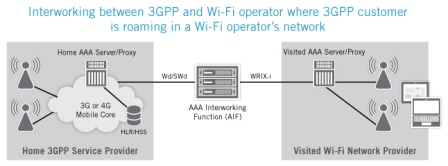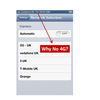
In a recent blog, I discussed Wi-Fi roaming and the wireless roaming intermediary exchange (WRIX), which is similar to an internetwork packet exchange (IPX) for Wi-Fi roaming. The WRIX is broken down into three levels that cover the various interactions needed between operators to support roaming.
The first level, WRIX-i (interconnect), specifies the interface between the visited network provider (VNP) and the home service provider (HSP). WRIX-i requires the use of RADIUS authentication, authorization and accounting (AAA) procedures and some specific attributes associated with access and accounting services. The second level is WRIX-d, which deals with data clearing or wholesale accounting. Finally, WRIX-I is for financial clearing or wholesale billing. These WRIX specifications provide a high degree of interoperability between Wi-Fi operators. However, real world implementations may still require RADIUS-to-RADIUS mediation and the need for interworking functionality with other signaling protocols as part of the overall solution to correct for incompatibilities between operator networks.
The 3rd Generation Partnership Project (3GPP) has developed specifications for GSM operators on how Wi-Fi networks can integrate with 3G and 4G mobile networks. The GSMA and Wireless Broadband Alliance (WBA) are working together to harmonize efforts on Wi-Fi roaming in order to make the integration of 3GPP mobile and Wi-Fi seamless and transparent to the end user. Another initiative, Hotspot 2.0, led by the Wi-Fi Alliance, is focusing on ways to help devices improve the detection and selection of Wi-Fi networks and reduce the traffic impact on core facilities.
The GSMA’s wireless local area network (WLAN) roaming guidelines provide technical solutions for enabling roaming between Wi-Fi networks and 3GPP 3G and 4G networks. The GSMA roaming reference model consists of two sets of interfaces. One of the interfaces is between the mobile device and Wi-Fi access network, and provides functions such as user authentication. The other set of interfaces (Wd/SWd) is between the visited Wi-Fi network and the home service provider (HSP) network. The SWd and Wd interfaces use Diameter and RADIUS, respectively, to provide the underlying capabilities for interconnection between a 3G hotspot provider and a Wi-Fi operator.
In order to accommodate roaming over a diverse set of user devices and network implementations, Wi-Fi and 3GPP network architectures will need to provide interworking between different protocols used for AAA. They will also need to mediate between variations of the same protocol.
A customer with a Wi-Fi device, for example, would need to authenticate back to the HSP network. Authentication messages would be sent over the Wd or SWd interface between the 3GPP network’s AAA proxy and the Wi-Fi operator’s AAA server. For operators on a pre-release 8 version of 3GPP specifications, it would be the Wd interface that uses RADIUS; for operators using 3GPP release 8 or higher, it would be the SWd interface that uses Diameter signaling. In order for both of these scenarios to function properly, interworking with the WRIX-i interface of the Wi-Fi operator would be necessary.
In another scenario, a customer in a 3GPP network might want to roam and use services from a Wi-Fi operator. The subscriber’s device would utilize SIM-based authentication methods that would need to proxy through the Wi-Fi operator’s network. Authentication messages would go through the AAA proxy of the virtual serial port (VSP) over the WRIX-i interface and would require interworking with the Wd or SWd interface of the 3GPP operator.
Interworking is also required in many cases in the 3GPP operator’s mobile core. In pre-release 8 3GPP networks, SS7/MAP is used for connecting the home AAA server to the home location register (HLR) to authenticate the user. A RADIUS to MAP gateway function is needed to interwork the RADIUS-based home AAA server with the SS7-based HLR. In the case of 4G networks or release 8 or greater 3GPP networks, there would be a home subscriber server (HSS) in the place of the HLR that would connect to the AAA proxy/server. The HSS uses Diameter as the enabling protocol and thus would require an interworking function that would convert the RADIUS to Diameter signaling.
In my next blog, I will discuss the need for signaling interworking. In the meantime, if you want to try out a free demo of the Diameter Services Helix, get in touch with our team today.













